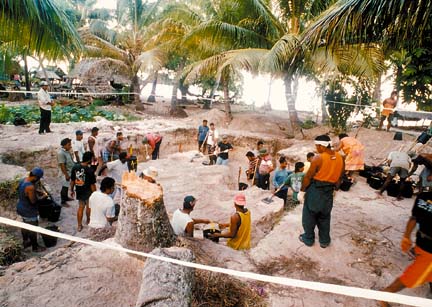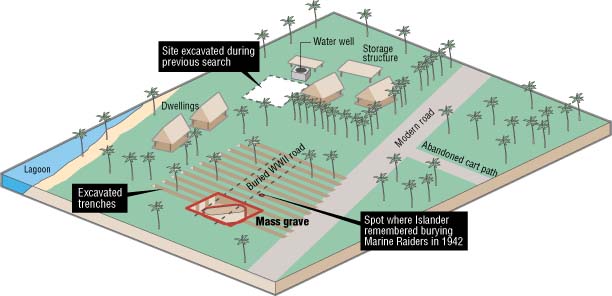
Friday, November 10, 2000


By Spc. Christopher Licking, CILHI
Unlike a typical excavation site, the hot, sandy beaches of
Makin Atoll preserved the Marines' skeletons so well that
some of the Marines' skulls still had on their helmets.
World War II:
Case of the
lost grave
On Aug. 17-18, 1942, 221 soldiers of the 2nd Marine Raider Battalion attacked the Japanese stronghold on Butaritari Island, part of what was then the Gilbert Islands. Nineteen Americans and 83 enemy soldiers were killed in the first U.S. amphibious strike deep inside Japanese defenses since the attack on Pearl Harbor. CILHI discovered in 1998 that after the attack, Raiders founder Maj. Evans Carlson paid an islander $50 to bury the Marines. The next year CILHI anthropologist Brad Sturm found a 75-year-old islander who recalled burying them when he was a teen-ager. The islander's account brought the recovery team within 16 feet of the shallow grave that held 20 people. It is believed to be the largest and most significant discovery since the program began. The lab is still trying to identify the individuals.


Anthropologists dug a series of trenches around the suspected grave site. One of the first trenches unearthed the remains of an islander. The next trench uncovered a helmet. Two days later, the team found the remains of the Marines. The 19 Marines and the islander were buried on top of each other, three deep.
CILHI policy prevents photographs of remains from being published.
All bones and teeth photographed are replicas.
E-mail to City Desk
© 2000 Honolulu Star-Bulletin
https://archives.starbulletin.com




